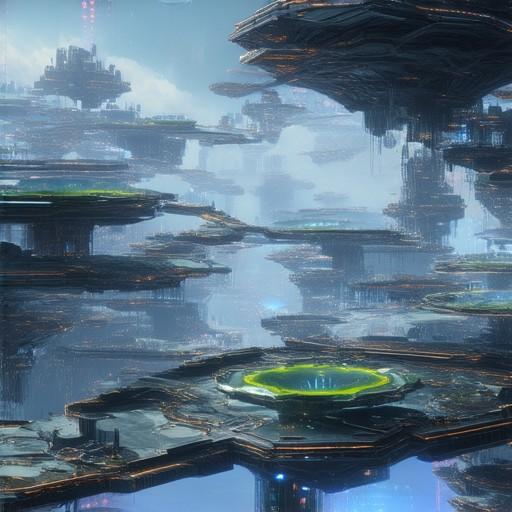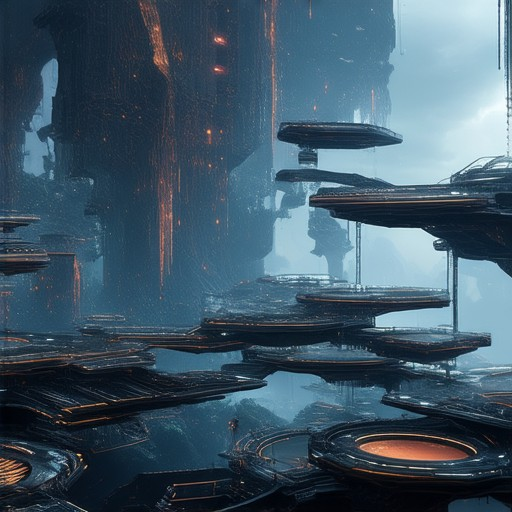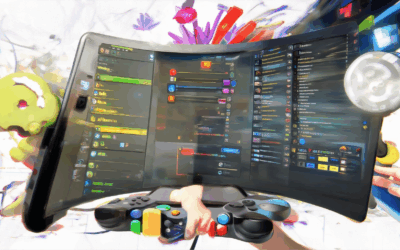Game design is a complex art form that relies heavily on creating engaging experiences for players. One of the most critical aspects of this process is designing effective level progression systems. From simple linear pathways to intricate ladders of challenges, the way players advance through a game significantly impacts both engagement and overall satisfaction. Whether it’s mastering the types of levels in a game or crafting a progression system that feels natural and rewarding, developers must carefully consider how players grow and evolve within the world they’re immersed in. This article delves into the intricacies of game level progression, exploring its evolution, the different approaches taken by developers, and how it shapes the player experience. By examining the hierarchy of progression elements and the strategies behind creating balanced and meaningful progression paths, we’ll uncover why game progression remains a cornerstone of successful game design.
Key Takeaways
- Game Level Progression Enhances Engagement and Retention: Systematically guiding players through challenges and growth opportunities.
- Diverse Progression Types Cater to Different Playstyles: Linear, branching, and reward-based designs provide varied experiences.
- Effective Progression Hinges on Clear Rewards and Balanced Challenges: Keeping players motivated and engaged.
- Adaptive Progression Aligns with Player Goals: Ensuring progression mirrors what players aim to achieve.
- Incorporate Progression in Game Design Thoughtfully: Using platforms like Indie Dev Games to integrate rewards and skill development.
- Structured Learning Progression Builds Expertise Gradually: From basics to advanced skills through guided steps.
- Hierarchical Structures Streamline Efforts: Providing clarity, motivation, and efficiency in development processes.
- Address Challenges in Progression Design: Avoid misalignment and maintain adaptability to changing priorities.

Progression System in Games
Progression in video games refers to the mechanism by which players advance through the game, unlocking new content, abilities, or levels. It serves to guide players toward achieving objectives and provides a sense of growth and accomplishment.
Types of Progression Systems
- Traditional Level-Based Progression: Players advance through numbered levels, earning experience points to unlock new abilities or access to advanced levels. Common in games like Super Mario and The Legend of Zelda .
- Skill Tree Progression: Players unlock abilities and skills, often organized in a hierarchical tree. Examples include World of Warcraft and Diablo III .
- Exploration-Based Progression: Progression is tied to discovering new areas or content. Prominent in games like Minecraft and Skyrim .
- Gear and Equipment Progression: Players acquire stronger weapons and armor as they progress, enhancing combat capabilities. Found in titles like Final Fantasy .
- Character Class Progression: Players select a class at the start and unlock abilities and talents as they level up. Examples include Diablo III and League of Legends .
- Combat-Based Progression: Progression is achieved through mastering combat mechanics and defeating increasingly challenging enemies. Seen in games like Dark Souls .
- Seasonal and Event-Based Progression: Temporary goals and challenges during specific events, such as seasonal tournaments in Fortnite .
- Open-World Progression: Players shape the game world through their actions, influencing narratives and environments, as in Red Dead Redemption 2 .
Impact on Gameplay
Progression systems significantly influence gameplay dynamics, affecting how players engage with the game. Linear progression can provide clarity, while flexible systems like skill trees offer customization. Exploration-based systems encourage discovery, while gear progression enhances challenge and reward.
Examples and Considerations
Each progression type offers unique benefits and drawbacks. For instance, traditional leveling systems ensure predictable advancement, while skill trees allow for diverse playstyles. Balancing these systems is crucial for maintaining engagement and replayability.
Conclusion
A well-designed progression system enriches the player experience, catering to different preferences and encouraging continued engagement. Whether through leveling up, unlocking abilities, or shaping the world, progression adds depth and direction to interactive entertainment.
What Are the 7 Stages of Game Design?
The process of creating a video game involves several distinct stages, each focusing on different aspects of development. Below is a breakdown of the primary stages involved in game design:
- Concept and Idea Generation: This is the initial phase where the game designer conceives the core idea and theme of the game. It involves brainstorming, researching market trends, and validating the idea through prototyping.
- Design Documentation: Once the idea is solidified, the designer creates detailed documentation that outlines the game’s mechanics, objectives, and visual style. This includes wireframes, storyboards, and art style guides.
- Prototyping and Testing: The prototype phase involves creating a basic version of the game to test the core mechanics. Feedback from playtests helps refine the design and identify issues early in the development process.
- Art Style and Visual Design: This stage focuses on defining the visual identity of the game. It includes selecting a art style, designing character models, environments, and ensuring consistency across all elements of the game.
- Level Design and Worldbuilding: Level designers create individual levels and the overarching world. This involves designing gameplay encounters, ensuring environmental storytelling, and maintaining a cohesive world that immerses the player.
- Sound Design and Music Integration: Sound effects and background music play a crucial role in immersing players. This stage involves recording, editing, and mixing sounds to complement the game’s atmosphere and enhance gameplay.
- Final Polish and Optimization: In this phase, the game is polished to ensure smooth performance and usability. This includes bug fixing, performance optimization, and fine-tuning gameplay mechanics for a seamless experience.
- Launch and Post-Launch Support: The final stages involve preparing for release, including marketing, distribution, and launching the game. Post-launch support includes updates, expansions, and community engagement to keep players invested long-term.
For more detailed insights into each stage, visit our Game Design Tutorials section, where we explore each phase in-depth. Our forum also provides a space for developers to share experiences and seek advice.

What Does Game Progression Mean?
Game progression refers to the structured direction and development of gameplay experiences, guiding players toward achieving specific objectives and advancing through various stages. It encompasses the core mechanisms that define how players interact with the game world, unlock new content, and engage with its systems.
Core Components of Game Progression
- Objective Alignment : Clear goals are established to provide players with a sense of direction. These objectives may range from completing levels to mastering skills or achieving high scores.
- Mechanics Design : The rules and systems governing player actions, such as combat, exploration, or puzzle-solving, play a crucial role in shaping progression.
- Feedback Loop : Regular updates and rewards keep players motivated. Positive reinforcement, such as unlocking new abilities or gear, encourages continued engagement.
- Level Scaling : As players advance, challenges increase in difficulty to maintain interest and prevent the game from becoming too easy.
Examples of Game Progression Systems
- Open-World Games : Players explore vast environments, uncover secrets, and complete quests to shape the story and world around them.
- RPGs : Character classes, skill trees, and experience points drive progression, allowing players to customize their characters and strengthen them over time.
- Survival Games : Players manage resources, overcome obstacles, and adapt to changing conditions to survive and thrive.
Best Practices for Game Designers
- Balance Progression Pace : Ensure progression feels fair and rewarding without overwhelming players.
- Iterate Based on Feedback : Continuously refine mechanics and systems based on player testing and feedback.
- Leverage Multiple Progression Paths : Offer varied ways for players to reach the endgame, catering to different playstyles.
By thoughtfully designing game progression systems, developers can create immersive and engaging experiences that keep players invested in their journey.

Level Progression
Level progression is a fundamental concept in gamification that refers to the systematic advancement of players through various stages of a game or application. This mechanism is designed to guide players through a sequence of challenges, rewards, and growth opportunities, ensuring engagement and retention.
Types of Level Progression
- Linear Progression: Players advance steadily through predefined levels, often with each level representing a greater challenge or skill requirement.
- Branching Progression: Players can choose different paths or unlock alternative gameplay based on their actions and decisions.
- Reward-Based Progression: Players earn rewards such as badges, points, or unlocks as they achieve milestones.
Factors Influencing Level Progression
- Rewards and Incentives: Clear and meaningful rewards keep players motivated.
- Difficulty Curve: Balancing challenge to ensure fun and fairness.
- Player Goals: Aligning progression with what players want to achieve.
Examples of Level Progression in Popular Games
- Indie Dev Games Platform: Players earn badges and unlock features as they participate in tutorials and community activities.
- Unity Games: Progression is often tied to learning new skills or completing objectives in interactive environments.
- Unreal Engine Projects: Players may unlock new abilities or access exclusive content as they advance through levels.
Best Practices for Designing Effective Level Progression
- Keep It Visible: Ensure players understand their current stage and goals.
- Balance Challenges: Offer varied and fair challenges at each level.
Link to Resources: Explore detailed guides and tools for implementing level progression on Indie Dev Games .
Example of a Learning Progression
A learning progression is a structured approach to skill development that gradually builds upon foundational knowledge to advance expertise. Below is an example illustrating this concept:
- Beginning Stage : Understanding basic concepts.
- I can define terms such as protagonist, antagonist, conflict, and plot structure in literature.
- Developing Stage : Applying knowledge to analyze texts.
- I can identify these elements in a sample literary text.
- Advanced Stage : Critically evaluating and creating.
- I can create a story that effectively uses these elements to develop a compelling narrative.
This progression demonstrates how foundational knowledge evolves into analytical and creative abilities, fostering deeper understanding and mastery.

The Hierarchy of Progression
The concept of hierarchy in progression refers to the structured and organized manner in which various aspects of development or learning occur in a sequential and dependent manner. This structure ensures that each subsequent phase builds upon the previous one, creating a foundation for future growth and success.
Definition and Explanation
Hierarchical progression is characterized by the idea that progress is not random or chaotic but follows a logical order. Each stage of development depends on the successful completion of the preceding one. This principle applies to various domains, including education, personal growth, project management, and even video game development.
Examples of Hierarchical Progression
- Video Game Development: From concept to design, coding, testing, and launch, each stage depends on the prior one.
- Educational Learning: A student progresses from basic skills to advanced concepts, building knowledge incrementally.
- Personal Growth: Developing from childhood to adulthood, acquiring life skills and experiences along the way.
Benefits of Hierarchical Progression
- Clarity: Knowing the order of tasks or milestones reduces confusion and helps in prioritizing efforts.
- Motivation: Understanding the path forward provides a sense of direction and purpose.
- Efficiency: Focusing on one area before moving to the next ensures resources are used effectively.
Challenges in Maintaining Hierarchy
- Misalignment: Goals may become disconnected if not properly aligned with the overall objectives.
- Lack of Adaptability: Rigid hierarchies may fail to account for changes in priorities or unexpected obstacles.
Conclusion
Hierarchical progression is a fundamental concept that underpins much of how we approach learning, development, and achievement. By understanding and applying this principle, individuals and organizations can streamline their efforts, enhance productivity, and increase the likelihood of success.
For further reading on how to implement hierarchical progression in your projects, explore our resource hub dedicated to indie game developers.




0 Comments